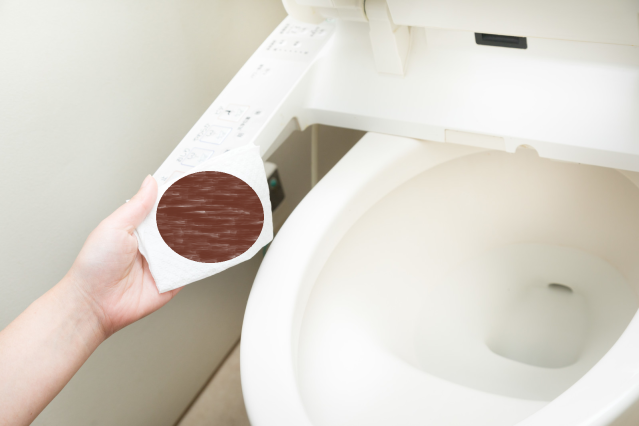
Translation trouble strikes as hotel ends up making a very awkward request.
In many ways, Japanese restrooms are a charming snapshot of the country’s highly developed concept of hospitality. Between their bidet functions, heated seats, and other clever design elements, the joy of pooping in Japan is on par with that of consuming the country’s delicious food that starts the digestive process.
So it’s probably a little startling when travelers from English-speaking countries see the signage in this Tokyo hotel that seems to imply that once you’re done wiping your butt, you’re supposed to carry the wad of used paper to another restroom entirely.
驚いてはいけない!これが2018年東京のド真ん中の安くはないホテルの言語レベルです。幸いおいらは英語でなく日本語で読めたので正しくトイレを使うことが出来ました。多分。 pic.twitter.com/td9kkcQDAn
— ono hiroshi (@hiroshimilano) August 18, 2018
Japanese Twitter user @hiroshimilano snapped the above photo in a hotel “right in the middle of Tokyo,” and one that he says isn’t cheap either. Located next to the guest-use laundry facility is a restroom with diagrams accompanied by instructions in five languages, and the English is as shaky as a pair of butt cheeks expulsing the end result of a bowl of extra-spicy ramen.
So let’s take another opportunity to laugh and learn as we examine the three swings-and-misses, starting with the biggest one, which goes with the middle illustration in @hiroshimilano’s photo.
● 1. Japanese: “Toiretto peepaa ha gomiire ni irezu ni toire ni nagashite kudasai.”
English: “Please carry away the toilet paper to the restroom without putting it in a garbage can.”
Starting with something the translation gets right, “Toiretto peepaa ha gomiire ni irezu ni” really does mean “without putting the toilet paper in a garbage can,” which the staff likely wanted to include as a gentle reminder for guests from countries with sewage systems that aren’t designed with a capacity for paper waste (which aren’t uncommon in many other parts of Asia).
Things get weird, though, with “Please carry away the toiler paper to the restroom,” since it means, if anything, that you’re supposed to take the clump of turd-enriched paper with you to some other restroom, where you can hopefully dispose of it once and for all. Part of the problem here is the Japanese word toire, which does double-duty as a term for both “restroom” and “toilet.” In this case, toire should have been translated as “toilet,” since, as the illustration shows, the sentence is talking about the porcelain poop pot.
But what about “please carry away?” This looks to be a flubbed translation of nagasu, a verb which literally translates as “flow.” However, nagasu is always used with an object. For example, if a river is just flowing by itself, the word is nagareru. If the flowing of the river is causing something else to move, however, like when the current is carrying a leaf or a raft downstream, that’s nagasu, and the same concept is applicable to what happens when water flows down the toilet drain, taking used toilet paper with it. Unfortunately, the hotel’s translation doesn’t account for the fact that in English we use “flush” to talk about initiating toilet draining, which is how the sign ended up with “carry away the toilet paper,” which has a very different meaning from the original Japanese, which should have been translated as “Please flush the toilet paper down the toilet without putting it in a garbage can.”
● 2. Japanese: “Toire ha suwatte goriyou kudasai.”
English: “The restroom sits down, and please use it.”
Moving back up to the top illustration in the photo, once again we’ve got a case where toire should have been translated as “toilet” instead of “restroom.” Even if we fixed that, though, we’d have “The toilet sits down, and please use it,” which begs the question of how can a toilet, which doesn’t have legs, sit down?
This time, the trouble stems from ha (written は and pronounced “wa”), which is used in Japanese to mark the topic of a sentence. For example, if you wanted to say “Kaori laughed” in Japanese, you’d say “Kaori ha waratta,” since we’re talking about Kaori.
In the vast majority of situations, a sentence’s topic is the same as its grammatical subject, and there’s no need to translate ha into any sort of clunky English equivalent. There are exceptions, though, and in this case the toilet, being an inanimate object, isn’t the subject for the verb “sit” (since it’s you, the reader/toilet user, who’s supposed to sit). For this instance, ha should be translated as something like “as for,” which would give the English sentence the same meaning as the Japanese original: “As for the toilet, please sit down and use it,” or, in smoother-sounding English, “Please sit down while using the toilet.”
Once again, this notice is aimed at guests from parts of Asia (rural Japan included) where squat toilets are the predominant style, and so some people may not be familiar with the operating procedure for a Western-style toilet.
● 3. Japanese: “Botan wo osu to mizu ga nagaremasu.”
English: “Water flows when I push the button.”
Here we see another appearance by nagareru/nagasu, this time with the subject mizu (“water”) attached. Again, this would be smoother if the translation accounted for the fact that when talking about toilets in English, the flowing of the water is called “flushing,” and there’s no need to specify the water, since that’s understood from the toilet context.
But having “I” here makes it sound like the author of the sign, or perhaps some other member of the hotel staff, has to come by and personally flush for you each time, which is going to be a problem for even modest-sized dookie deposits, let alone multi-flush follow-ups to particularly oily meals. This time, the problem is a result of spoken Japanese often omitting the subject when it can be understood from context. However, that generally can’t be done in English, and online Japanese-to-English translation programs (which the hotel likely used in creating the sign) often account for this by simply assuming the user is talking about himself and slapping “I” at the start of the clause.
Of course, unless you’re sharing the bathroom stall with other people, it’s obvious that “you” are the one pressing the button, which is why it’s not explicitly specified in the Japanese text, but that lack of information caused the translation program to drop the ball. After one last polishing of “the button” into “this button” (to account for the illustration showing multiple buttons), we finally get to what the Japanese text is actually saying: “The toilet flushes when you push this button.”
It’s a little disappointing to see a non-budget hotel (at least by @hiroshimilano’s standards) be so lax in their translation standards. Still, it’s nice to see an effort being made, however slight, even as we shudder to think of how baffling the sign’s Chinese, Korean, and Thai explanations may be. In the end, it’s a good thing the sign has pictures too, and that it didn’t have to delve into such complicated public restroom terminology as “middle-aged man indirect dick kissing.”
Source: Twitter/@hiroshimilano via Hachima Kiko
Top image: Pakutaso (edited by SoraNews24)
Insert images: Pakutaso (1, 2, 3)
Follow Casey on Twitter for more things to read in/about bathrooms.




 Kyoto village dealing with poo on floor as Japanese-style toilets confuse foreign travelers
Kyoto village dealing with poo on floor as Japanese-style toilets confuse foreign travelers Japanese book “nekotan” teaches foreign language the best way possible: by talking about cats
Japanese book “nekotan” teaches foreign language the best way possible: by talking about cats Flush your prayers down the toilet at this unique Japanese temple
Flush your prayers down the toilet at this unique Japanese temple Japanese arcade restroom asks customers to declare loyalty for dogs or cats in toilet paper poll
Japanese arcade restroom asks customers to declare loyalty for dogs or cats in toilet paper poll Poop Kanji-Drill toilet paper is the best way to accomplish your Japanese studying doo-ties
Poop Kanji-Drill toilet paper is the best way to accomplish your Japanese studying doo-ties McDonald’s new Happy Meals offer up cute and practical Sanrio lifestyle goods
McDonald’s new Happy Meals offer up cute and practical Sanrio lifestyle goods Starbucks reopens at Shibuya Scramble Crossing with new look and design concept
Starbucks reopens at Shibuya Scramble Crossing with new look and design concept Our reporter takes her 71-year-old mother to a visual kei concert for the first time
Our reporter takes her 71-year-old mother to a visual kei concert for the first time Disney princesses get official manga makeovers for Manga Princess Cafe opening in Tokyo
Disney princesses get official manga makeovers for Manga Princess Cafe opening in Tokyo Tokyo’s most famous arcade announces price increase, fans don’t seem to mind at all
Tokyo’s most famous arcade announces price increase, fans don’t seem to mind at all Randomly running into a great sushi lunch like this is one of the best things about eating in Tokyo
Randomly running into a great sushi lunch like this is one of the best things about eating in Tokyo Dress like your favourite Lupin III character with suits and kimono designed by Japanese tailors
Dress like your favourite Lupin III character with suits and kimono designed by Japanese tailors Japanese black curry “experiment” takes place at an unlikely restaurant branch in Tokyo
Japanese black curry “experiment” takes place at an unlikely restaurant branch in Tokyo Foreign English teachers in Japan pick their favorite Japanese-language phrases【Survey】
Foreign English teachers in Japan pick their favorite Japanese-language phrases【Survey】 Is the new Shinkansen Train Desk ticket worth it?
Is the new Shinkansen Train Desk ticket worth it? We try out “Chan Ramen”, an underground type of ramen popular in the ramen community
We try out “Chan Ramen”, an underground type of ramen popular in the ramen community Beautiful new Final Fantasy T-shirt collection on the way from Uniqlo【Photos】
Beautiful new Final Fantasy T-shirt collection on the way from Uniqlo【Photos】 There’s a park inside Japan where you can also see Japan inside the park
There’s a park inside Japan where you can also see Japan inside the park New Studio Ghibli bedding sets are cool in all senses of the word
New Studio Ghibli bedding sets are cool in all senses of the word Japanese convenience store packs a whole bento into an onigiri rice ball
Japanese convenience store packs a whole bento into an onigiri rice ball Hanton rice — a delicious regional food even most Japanese people don’t know about, but more should
Hanton rice — a delicious regional food even most Japanese people don’t know about, but more should New Pokémon cakes let you eat your way through Pikachu and all the Eevee evolutions
New Pokémon cakes let you eat your way through Pikachu and all the Eevee evolutions Hamburg and Hamburg Shibuya: A Japanese restaurant you need to put on your Tokyo itinerary
Hamburg and Hamburg Shibuya: A Japanese restaurant you need to put on your Tokyo itinerary Studio Ghibli releases Kiki’s Delivery Service chocolate cake pouches in Japan
Studio Ghibli releases Kiki’s Delivery Service chocolate cake pouches in Japan Japan’s bone-breaking and record-breaking roller coaster is permanently shutting down
Japan’s bone-breaking and record-breaking roller coaster is permanently shutting down New definition of “Japanese whiskey” goes into effect to prevent fakes from fooling overseas buyers
New definition of “Japanese whiskey” goes into effect to prevent fakes from fooling overseas buyers Foreign passenger shoves conductor on one of the last full runs for Japan’s Thunderbird train
Foreign passenger shoves conductor on one of the last full runs for Japan’s Thunderbird train Our Japanese reporter visits Costco in the U.S., finds super American and very Japanese things
Our Japanese reporter visits Costco in the U.S., finds super American and very Japanese things Kyoto bans tourists from geisha alleys in Gion, with fines for those who don’t follow rules
Kyoto bans tourists from geisha alleys in Gion, with fines for those who don’t follow rules Studio Ghibli unveils Mother’s Day gift set that captures the love in My Neighbour Totoro
Studio Ghibli unveils Mother’s Day gift set that captures the love in My Neighbour Totoro Domino’s Japan now sells…pizza ears?
Domino’s Japan now sells…pizza ears? New Japanese KitKat flavour stars Sanrio characters, including Hello Kitty
New Japanese KitKat flavour stars Sanrio characters, including Hello Kitty Kyoto creates new for-tourist buses to address overtourism with higher prices, faster rides
Kyoto creates new for-tourist buses to address overtourism with higher prices, faster rides Sales of Japan’s most convenient train ticket/shopping payment cards suspended indefinitely
Sales of Japan’s most convenient train ticket/shopping payment cards suspended indefinitely Sold-out Studio Ghibli desktop humidifiers are back so Totoro can help you through the dry season
Sold-out Studio Ghibli desktop humidifiers are back so Totoro can help you through the dry season Japanese government to make first change to romanization spelling rules since the 1950s
Japanese government to make first change to romanization spelling rules since the 1950s Ghibli founders Toshio Suzuki and Hayao Miyazaki contribute to Japanese whisky Totoro label design
Ghibli founders Toshio Suzuki and Hayao Miyazaki contribute to Japanese whisky Totoro label design Doraemon found buried at sea as scene from 1993 anime becomes real life【Photos】
Doraemon found buried at sea as scene from 1993 anime becomes real life【Photos】 Tokyo’s most famous Starbucks is closed
Tokyo’s most famous Starbucks is closed One Piece characters’ nationalities revealed, but fans have mixed opinions
One Piece characters’ nationalities revealed, but fans have mixed opinions We asked a Uniqlo employee what four things we should buy and their suggestions didn’t disappoint
We asked a Uniqlo employee what four things we should buy and their suggestions didn’t disappoint Princesses, fruits, and blacksmiths: Study reveals the 30 most unusual family names in Japan
Princesses, fruits, and blacksmiths: Study reveals the 30 most unusual family names in Japan Studio Ghibli’s new desktop Howl’s Moving Castle will take your stationery on an adventure
Studio Ghibli’s new desktop Howl’s Moving Castle will take your stationery on an adventure People in Japan are now stealing toilet paper in midst of coronavirus crisis
People in Japan are now stealing toilet paper in midst of coronavirus crisis Nagoya City Council debates: Is toilet paper really needed in public restrooms?
Nagoya City Council debates: Is toilet paper really needed in public restrooms? Squat toilets’ popularity fading as parents call for them to be abolished in Japanese schools
Squat toilets’ popularity fading as parents call for them to be abolished in Japanese schools If you have an apartment in Japan, your “fire disaster insurance” may also be toilet insurance
If you have an apartment in Japan, your “fire disaster insurance” may also be toilet insurance Japan’s new custom-order cat-theme toilet paper lets you wipe your butt with cuteness
Japan’s new custom-order cat-theme toilet paper lets you wipe your butt with cuteness Foreign shop clerk and Japanese customer fail to communicate because of Japanese language quirk
Foreign shop clerk and Japanese customer fail to communicate because of Japanese language quirk Use this Japanese-style toilet properly, or else “you are gonna fall down on s***”
Use this Japanese-style toilet properly, or else “you are gonna fall down on s***” Do you really need to wear toilet slippers when using the bathroom at home? Japan’s netizens vote
Do you really need to wear toilet slippers when using the bathroom at home? Japan’s netizens vote New Japanese toilet paper dispenser tears off sheets, folds the ends into a point for you【Video】
New Japanese toilet paper dispenser tears off sheets, folds the ends into a point for you【Video】 She just popped up from your toilet paper to say hello!
She just popped up from your toilet paper to say hello! 5 tips for staying healthy while traveling in Japan this winter!
5 tips for staying healthy while traveling in Japan this winter! Japanese store curses toilet paper supply to protect it from thefts
Japanese store curses toilet paper supply to protect it from thefts Japanese foaming bottom soap: An eco-friendly alternative to wet wipes
Japanese foaming bottom soap: An eco-friendly alternative to wet wipes Aichi police on lookout for scoundrel who stole public toilet’s flushing handle
Aichi police on lookout for scoundrel who stole public toilet’s flushing handle
Leave a Reply